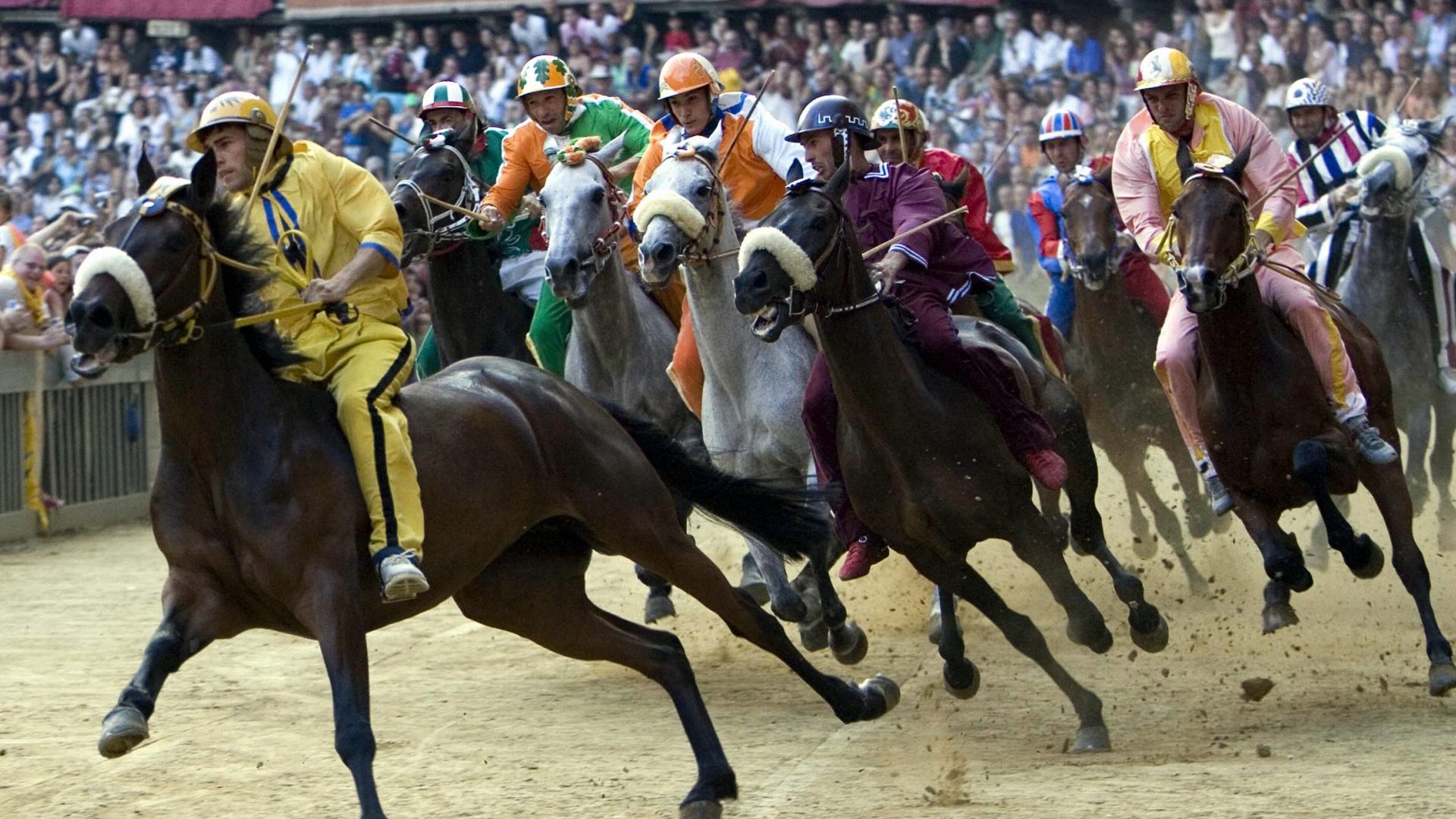The Palio is 90 seconds of mayhem that takes over Siena twice a year. The most recent “race” – a painfully inadequate word to describe 10 horses careering around the shell-shaped Piazza del Campo, for all of a minute and a half, was won by the contrada (district ) of La Lupa – the Wolf – whose 44-year-old jockey had not managed to obtain a ride for seven years.
La Lupa’s triumph followed a mere 45 minutes of plotting and manoeuvring at the starting rope – with the stressed-out starter bellowing at the jockeys to line up properly, and two false starts – one caused by a jockey falling off his horse after being shoved by his principal rival. All par for the course.
The Palio is a family hobby-cum-obsession. I’ve made the pilgrimage for over 40 years – in particular three days before the race itself when the horses are assigned, by lot, to the contrade. This lunchtime event lasts a quarter of an hour or so but the bakingly hot Campo fills up for it.
All of Siena, but none of the foreigners, knows which horses are good and which are not. There are several numbering systems in play – a number on a horse’s flank, a different one on its ear, and two more inserted into a large board on the wall of the town hall. The entire occasion seems designed to torment any outsider who wants to understand matters.
I condescendingly tell knots of bemused and grateful Americans what’s going on – sidling off every now and then to check with benevolent Sienese that I know what I’m talking about.
If “fate” (the word used constantly by the Sienese in connection with the Palio) deigns to give a contrada a decent horse, the noise of its supporters thunders around the entire piazza. Whereas if “fate” gives you a nag – the quality of silence is terrifying – a whole contrada in public mourning.
The tourists come of course. But when it comes to the day of the Palio the Sienese don’t much care about the tourists. All afternoon the place heaves with foreigners – but on a Palio race day, potentially the busiest of the year, the shops close after lunchtime. Your contrada comes first – and to hell with the lost business.
The Palio obviously provides the Sienese with a collective identity – because if their old enemy Florence, an hour up the road, is awash with its galactic museums, Siena has the living, breathing, all-consuming Palio. But it’s the parochial loyalty to a contrada, of which there are 17, that constitutes the Palio’s propulsive force – just a few thousand live in each. They are centuries old micro-universes – the providers of social, cultural and culinary events all year round – and dispensers of charitable funding.
On the evening before the race, each contrada organises an al fresco meal for its inhabitants. The entire city – and all generations – sits at trestle tables eating fabulous food, free, with everyone repeatedly bursting into song. It’s all rather moving.
The Palio is literally the freshly designed silk banner that goes to the winning contrada, for ever, after each race.
There is no elegant ceremony. You can forget about bigwigs draping medals around necks, or the doffing of hats at racecourses, because a nano-second after the last race the Palio was, as is custom and practice, wrenched from its moorings on a wooden balcony above the piazza by a bunch of not-to-be-argued-with hefty males who hurled themselves and their newly-acquired treasure back on to ground level – where madness ensued.
The winning jockey was then carried aloft through the streets of the city to the Duomo (cathedral) surrounded not only by the entire population of the contrada, but also their allies – because the Palio is, among many other things, an expression of the centuries-old friendships and rivalries between the different contrade. It seemed to take for ever. He arrived in the midst of shatteringly loud, but tuneful, singing, to be endlessly embraced by hysterically sobbing supporters before receiving a priestly blessing. And all of this fever before anyone had touched any alcohol.
It’s over 10 months to the next Palio – but the scheming involving jockeys, owners and contrada big cheeses goes on all year round. I am, reluctantly, resigned to the fact that as a non-Sienese I will never fully plumb the secrets. But, my, it’s fun trying to understand it.
Mark Damazer, a former BBC journalist and executive, is chair of the Booker Prize Foundation



